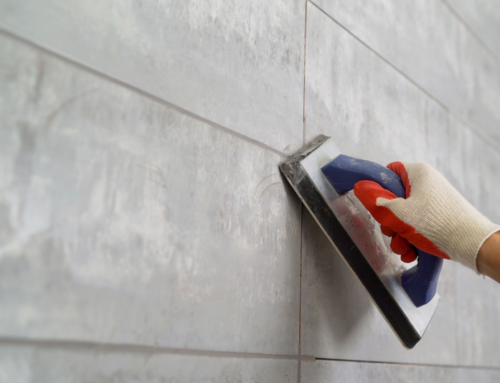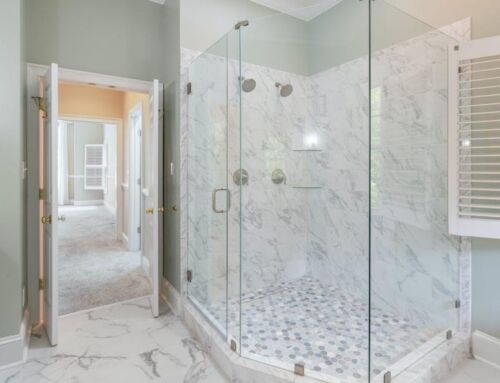There are a surprising number of terms for the stuff that goes between tiles: grout, caulking, silicone, sanded acrylic, non-sanded acrylic, and a few more as we get into the particular types of grout. So here is a guide to more or less briefly explain the difference between these products and why they are used in some areas and not others.
Grout
So generally, this is the stuff you find between your tiles on the floor and in between the tiles on your shower wall or the backsplash behind your counter. It works best on a flat plane, i.e. between the tiles that you walk on, and you most often see it fail where a wall and floor meet at 90 degree angle. Grout is very hard to the touch and inelastic, so it tends to crack if there is a lot of movement. Here are the specific types that you are most likely to come across:
-
Sanded Grout: This is the most common grout. It uses colored sand and a bonding agent – like cement or epoxy – to create a tough and durable surface to fill larger spaces between tiles, generally between ⅛ and ¼ inch. You can tell the grout is sanded by looking at the texture, which should be a little rough.
-
Epoxy Grout: This is the product we use on shower floors and in other problem areas. Instead of cement or resin, it uses a two part epoxy to bind everything together. This makes for a reliable product that can fully cure in a wet environment. Once cured, it is fully waterproof and less prone to cracking and staining than other kinds of grout.
-
Cement Grout: This is the product most commonly used in construction. We strongly recommend sealing this grout as close to installation as possible (after the grout has fully cured, so about a week after install). This will prevent a lot of staining and help protect your grout from damage. Depending on the water ratio used when mixing the grout, as well as how well mingled the sand and the cement bonding agents are before adding water, this product tends to have the most issues over time. Check out our blog on “Shower Tile Grout Longevity” if you’re worried your grout is failing.
-
Premixed Grout: There are variations of this kind of grout, sometimes called single component or resin grout, but this product comes in a bucket and there is no mixing required. This means that there is no risk of improper mixing and it tends to be much more consistent than cement based grout. As long as it’s not exposed to water while curing, it’s a great long term option. It also comes in a huge variety of colors and is easy to match to existing grout.
-
-
Non-sanded Grout: This is used in smaller grout lines than sanded grout, generally less than ⅛ of an inch. Non-sanded grout is generally used for two scenarios. It is commonly used with natural stone because it doesn’t scratch the finish during installation. It is also used for narrow grout lines because it can evenly fill smaller spaces than sanded grout. The texture is matte and smooth, unlike the sandpaper-like feeling of sanded grout.
Caulking
Caulk is designed to seal the spaces where grout tends to fail. It is used at 90 degree intersections where walls and floors (or countertops) meet. It is designed to be flexible, as there can be a surprising amount of motion between these intersections, especially on outside walls. Generally we use caulking where there is a joint that needs to move, and where grout would crack or otherwise fail over time. Because of this dynamic movement, caulk does wear out over time and needs to be replaced periodically. We’re going to focus on caulking for tile, shower and bath applications.
-
100% Silicone: This is the most durable product on the market and it comes in a huge range of colors, although the most common colors are white and clear. It has a shiny appearance and should feel like silicone to the touch. If you press your finger nail into it, it should leave a mark and then rebound. If there is a lot of play or movement in a space we strongly recommend the use of 100% silicone as other products will fail significantly sooner.
-
Sanded Acrylic: Also called Sanded Caulk, this product has sand mixed into it similar to grout. This helps to match the texture to grout in the walls, so the space has a cohesive texture and color. Different manufactures use different bases for this kind of caulk, and it can be an acrylic of a silicone base. Different brands will have different levels of elasticity, and it is generally less durable than 100% silicone, but is significantly more elastic than grout.
-
Non-sanded Acrylic: This product is designed to match non sanded grout, and it generally has a matte finish that is almost indistinguishable from non-sanded grout. It is more dynamic than non-sanded grout, but is generally the least durable kind of caulk and should only be used to match the non-sanded grout already in use.





